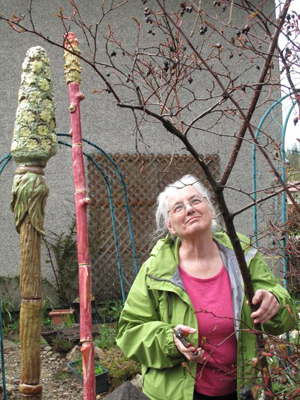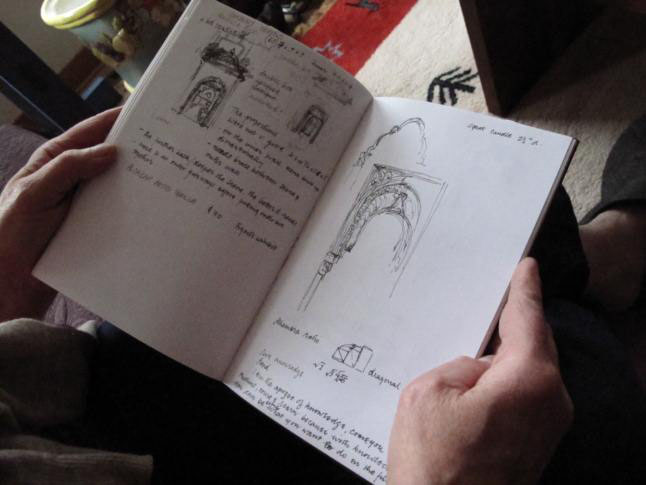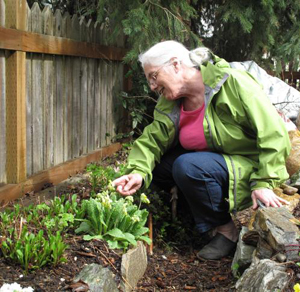
By Laura Stovel
Sandra Flood’s garden is a gathering of inspirations. Four ornate ceramic spears stand guard over tiny white tulips from Turkey. Budding vines weave around arbors and the first spring flowers bring bursts of yellow, blue and white. There is always something interesting, something unexpected. You only have to look.
And so it is with the Islamic gardens and passageways of Spain that inspired Flood in her ceramic works that will be part of her Fragments exhibition opening at the Visual Arts Center on Friday, May 11. The old palace cities of Seville, Cordoba and Grenada have their own gardens, courtyards and passageways that seem to draw you from one incredible space to the next. Flood, who visited Spain with her niece, Hanna, 18 months ago, described streets lined with orange trees and Moorish buildings “completely decorated internally with stucco and paint and tiles. It’s all very intricate and lacey” – and small.
“What I loved was it was all small-scale for palaces, and cities were small-scale too. There were interconnecting rooms with high ceilings, well designed for cold and hot weather.” The Moors, originally from Morocco, ruled over Spain for more than 800 years from the early 8th century to the late 15th century and even after the Catholic monarchies recaptured power, they continued to use Moorish artisans to decorate their buildings.

This history of conquest and reconquest resulted in a layering that Flood tries to capture in her work. “Seville was undoubtedly built over three or four much older Islamic palaces and then a Christian king came and knocked them down, and then another knocked the previous one down and used Moorish craftspeople to decorate the new buildings. That layering and its remnants is one of the things that has come up the most in the work of this exhibition,” she said.
“One of the things that fascinated me was that the Moors that settled in Spain inherited a high-power culture that looked at plant breeding and water resources. They introduced all kinds of plants into southern Spain. All the palace cities were surrounded by orchards and vegetable gardens,” she said.
“The Moors never set up cities without ensuring there was a water supply. These waters went through viaducts, fountains, the buildings and gardens in cisterns and reflected the buildings. In Alhambra (a famous Moorish palace in Granada) you can hear water everywhere. I find them very peaceful, even with hoards of people,” she said.
Flood’s pottery, like her garden and the Spanish gardens and buildings from which she draws inspiration, is both an intellectual and esthetic experience – not surprising who has a PhD in Art Gallery and Museum Studies. There is a bundle of knowledge, history and beauty in each offering yet they are more interesting, more complete, as a collection.
“Gardens are very relaxing, like making pots,” she explained. “You start working in a garden or on a pot and you become completely absorbed. It’s

an “intellectual as well as a tactile absorption. I’m interested in garden design and the history of gardens and the history of plants – how they travelled from a to b. The exhibit was really thinking in clay about certain aspects of the journey. It’s all so difficult to translate” these ideas in an object that “might conceivably be functional,” like a cup, a teapot or a vase.
This exhibit, which opens at 6 pm this Friday, May 11, at the Visual Arts Centre, will be a treat for gardeners, history buffs, travelers and anyone who simply enjoys beautiful art.



